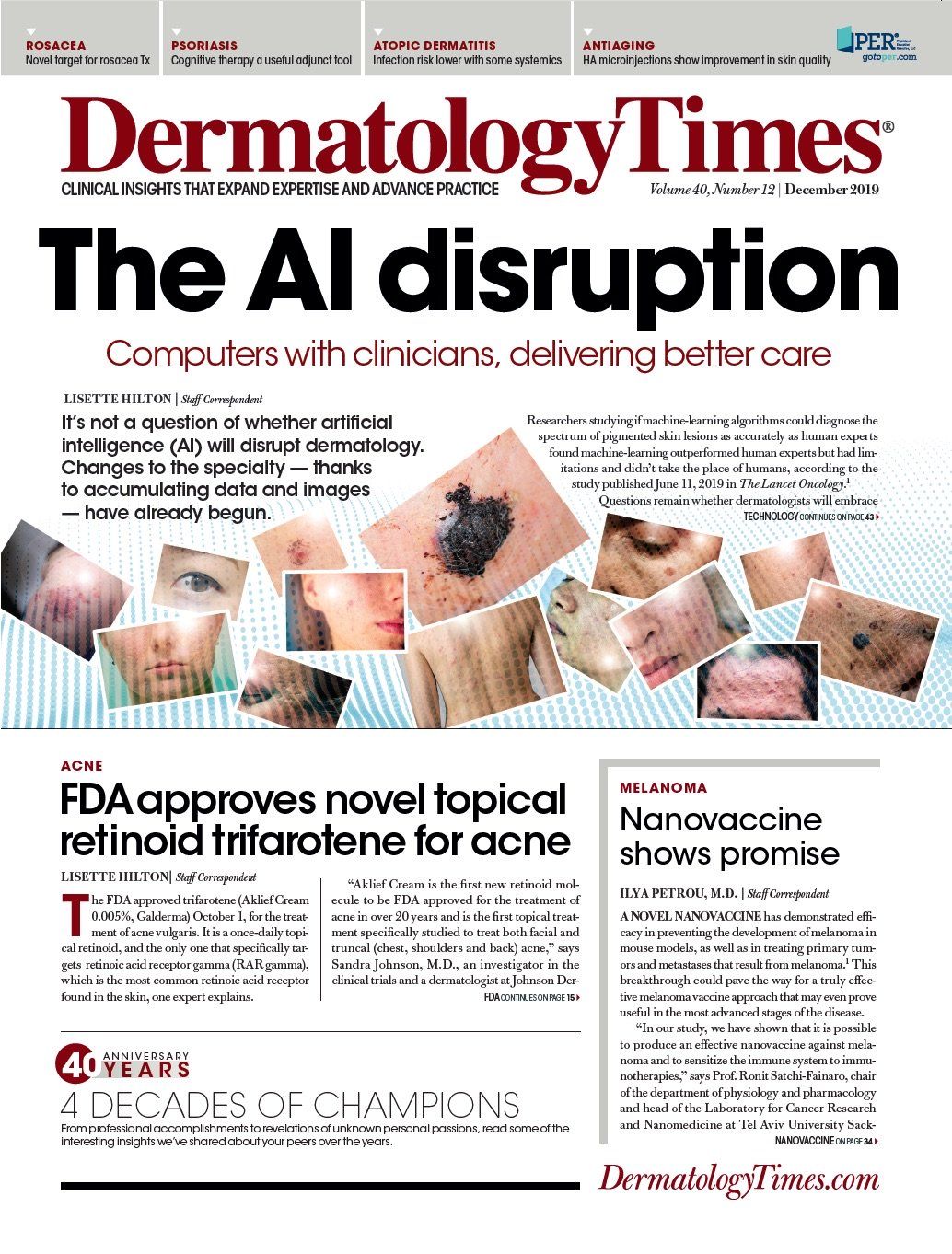- Case-Based Roundtable
- General Dermatology
- Eczema
- Chronic Hand Eczema
- Alopecia
- Aesthetics
- Vitiligo
- COVID-19
- Actinic Keratosis
- Precision Medicine and Biologics
- Rare Disease
- Wound Care
- Rosacea
- Psoriasis
- Psoriatic Arthritis
- Atopic Dermatitis
- Melasma
- NP and PA
- Skin Cancer
- Hidradenitis Suppurativa
- Drug Watch
- Pigmentary Disorders
- Acne
- Pediatric Dermatology
- Practice Management
- Prurigo Nodularis
- Buy-and-Bill
Publication
Article
Dermatology Times
Spironolactone efficacy may be similar to oral antibiotic Tx
Author(s):
Several retrospective analyses indicate spironolactone may have similar efficacy to oral antibiotics in the treatment of acne in women. Underuse of this off-label treatment option may be due to lack of efficacy evidence. The two options should be directly evaluated in future studies to guide practice.
Spironolactone may be an effective antibiotic alternative for treating adult women with acne; however, the specialty needs studies comparing the two therapies directly to guide practice, says John Barbieri, M.D., a postdoctoral research fellow in dermatology at the University of Pennsylvania Perelman School of Medicine in Philadelphia.
Acne often persists into adulthood with approximately 50% of women reporting acne in their 20s and 35% reporting the condition in their 30s. For women whose acne cannot be managed with topical medications like retinoids and benzoyl peroxide, the most common systemic medication prescribed are oral antibiotics such as doxycycline and minocycline.
“These agents can be helpful for acne, but, often, when they are stopped, the acne returns,” Dr. Barbieri says.
“Therefore, a patient with persistent acne may be on and off antibiotics for years.”
However, a potential risk of long-term use of oral antibiotics is the disruption of the microbiome and the development of antibiotic resistance, affecting both individual patients and the community at large. Therefore, the guidelines recommend limiting their use to no more than three months, Dr. Barbieri says.
A place for spironolactone
Another option for women with acne are medications that target the hormonal causes of acne, such as spironolactone and combined oral contraceptives.
However, a retrospective analysis published in the Journal of the American Academy of Dermatology (JAAD) found spironolactone is prescribed about five times less than oral antibiotics for the treatment of acne, despite growing use of this treatment option, Dr. Barbieri and colleagues reported in 2017. According to their analysis, the number of courses of spironolactone prescribed per 100 female acne patients who were managed by dermatologists increased from 2.08 in 2004 to 8.13 in 2013.1
Dr. Barbieri attributes the underuse of spironolactone, in part, to a lack of efficacy evidence, particularly with respect to how well it works compared to oral antibiotics.
In a recent research letter published in the Journal of the American Academy of Dermatology (JAAD), Dr. Barbieri and colleagues share outcomes from a retrospective study using claims data to evaluate drug usage survival, or duration of therapy, with spironolactone versus oral antibiotics. Among 4,321 patients treated with spironolactone, the mean course of duration was 697 days compared to 604 days among 7,517 patients treated with oral tetracycline-class antibiotics. Patients treated with spironolactone were 26% less likely to discontinue their course of treatment than those treated with oral antibiotics.2
In a retrospective cohort study using claims data to evaluate the frequency of treatment switching with spironolactone and oral tetracycline-class antibiotics in women with acne that appeared last year in the Journal of Drugs in Dermatology, Dr. Barbieri and colleauges also reported that among women who started on spironolactone, 14.4% were prescribed a different systemic agent within one year, compared to 13.4% who started on an oral tetracycline-class antibiotic.3
“Our results provide additional support that spironolactone represents an effective treatment for women with acne, and that it may have similar effectiveness to oral antibiotics in routine clinical practice,” Dr. Barbieri says.
“Instead of placebo-controlled trials, we need a prospective, randomized study comparing antibiotics to spironolactone to determine which medication is best for acne to guide practice,” he says. “Right now, most of our data derives from retrospective, observational studies or small trials that limit our ability to draw conclusions about the relative effectiveness of these potential treatment options.”
FDA approval of spironolactone would be ideal, but the financial incentives to conduct the necessary trials are lacking because the medication is generic, he says. However, he remains optimistic that increasing supportive evidence will emerge.
“If we do continue to find that spironolactone is a safe and effective treatment for acne in women, it would be great to see [it] being prescribed more often than oral antibiotics,” he says.
Disclosures:
Disclosures: Dr. Barbieri reports no relevant financial disclosures.
References:
References:
1. Barbieri JS, James WD, Margolis DJ. Trends in prescribing behavior of systemic agents used in the treatment of acne among dermatologists and nondermatologists: A retrospective analysis, 2004-2013. J Am Acad Dermatol. 2017;77(3):456-463.e4.
2. Barbieri JS, Choi JK, James WD, Margolis DJ. Real-world drug usage survival of spironolactone versus oral antibiotics for the management of female patients with acne. J Am Acad Dermatol. 2019;81(3):848-851.
3. Barbieri JS, Choi JK, Mitra N, Margolis DJ. Frequency of Treatment Switching for Spironolactone Compared to Oral Tetracycline-Class Antibiotics for Women With Acne: A Retrospective Cohort Study 2010-2016. J Drugs Dermatol. 2018;17(6):632-638.






